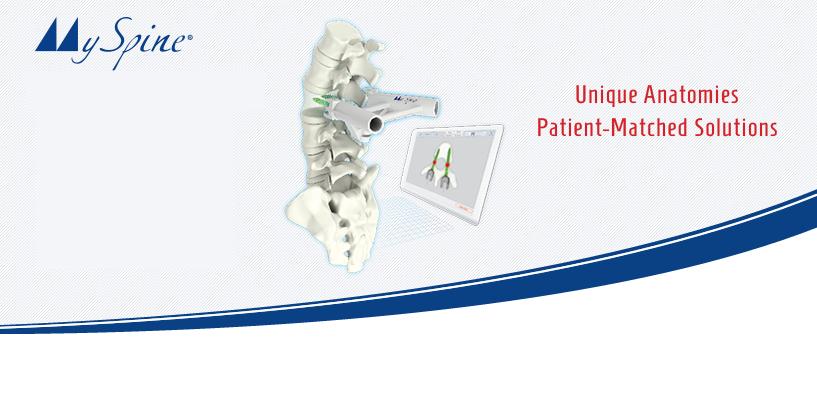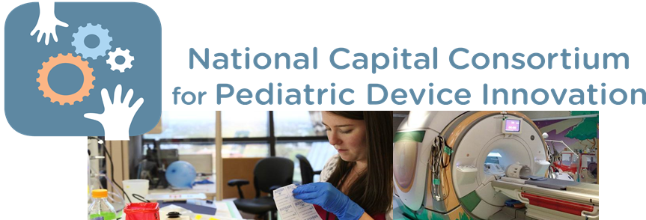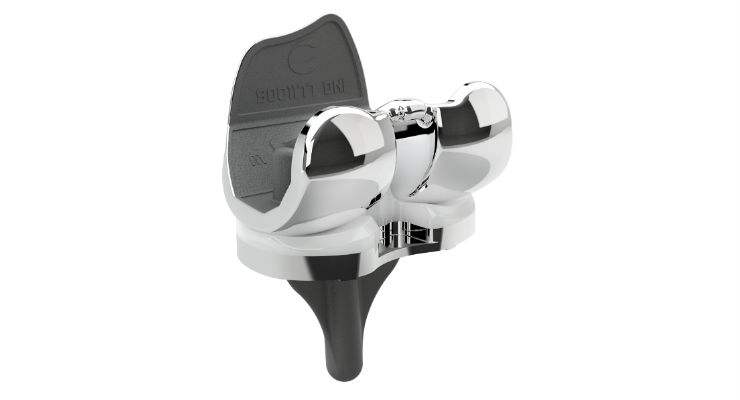BEDFORD, Mass., March 02, 2016 (GLOBE NEWSWIRE) — ConforMIS, Inc. (NASDAQ:CFMS), a medical technology company that uses its proprietary iFit Image-to-Implant technology platform to develop, manufacture and sell joint replacement implants that are customized to fit each patient’s unique anatomy, today announced the full commercial launch of iTotal® PS, the only customized posterior stabilized knee replacement system. Over 1,000 patients have been treated by select orthopedic surgeons using the iTotal PS during the limited launch over the past twelve months. The full commercial launch will take place at the American Academy of Orthopaedic Surgeons meeting in Orlando, FL from March 1–5, 2016.
Recent studies have demonstrated that approximately twenty percent or more of patients who receive an off-the-shelf total knee replacement are not satisfied with the results. The ConforMIS iTotal PS was designed to address the shortcomings of traditional knee replacements, which come in a fixed set of sizes and shapes. The customized iTotal PS implant builds on the advantages of the iTotal CR system, first introduced in May 2011. The iTotal PS implants are customized for each patient to avoid overhang, rotation, and sizing compromises, common causes of pain after surgery. In addition, iTotal PS is designed to restore the natural shape of each patient’s knee and has a customized cam and spine to provide optimal stability throughout the full range of motion.
Primary total knee implants are designed to either retain the patient’s own posterior cruciate ligament (cruciate retaining, or CR), or substitute for it (posterior stabilized, or PS). PS implants use a cam and spine feature to serve the function of the posterior cruciate ligament. The choice between CR and PS is largely based on surgeon preference. However, PS is heavily preferred in the US market, representing approximately 72% by revenue of all primary total knee replacements. With the launch of iTotal PS, combined with its existing iTotal CR, iDuo and iUni products, ConforMIS can address a much greater population of patients.
“The goal of a total knee replacement is a predictable outcome and a happy patient, every time. With off-the-shelf implants, most of the time we must make compromises,” said Jose A. Rodriguez, MD, Chief of Reconstruction Arthroplasty and the Director of the Arthroplasty Fellowship Program at Lenox Hill Hospital in New York City. “With ConforMIS, many of these compromises are eliminated because the implant fits anatomically. The reliability with which I can achieve a knee that fits better, and functions more naturally for my patients, is greater with iTotal PS than with standard, off-the-shelf implants.”
“The full launch of the iTotal PS nearly triples our addressable market. We believe this launch is our single biggest commercial opportunity to date,” said Philipp Lang, MD, MBA, Chief Executive Officer and President of ConforMIS. “With iTotal PS, we have now greatly expanded the number of patients who will be candidates for our customized knee replacement implants. We are very excited to bring the benefits of customized knee replacements to surgeons who prefer a posterior-stabilized design. Since we initiated our limited launch of iTotal PS last year, the feedback from surgeons has been extremely positive.”
The ConforMIS customized knee replacement products offer significant benefits to hospitals with a unique just-in-time delivery model. This model includes a single, pre-sterilized kit of patient-specific instruments, a single reusable instrument tray, and no implant inventory. The ConforMIS iTotal CR has already demonstrated clinical and economic benefits for surgeons, patients, and hospitals for an entire episode of care, from the initial hospitalization through recovery. We believe that promoting such clinical and economic benefits is critical to bundled payment programs such as the new Medicare Comprehensive Care for Joint Replacement (CJR).
About ConforMIS, Inc.
ConforMIS is a medical technology company that uses its proprietary iFit Image-to-Implant technology platform to develop, manufacture and sell joint replacement implants that are individually sized and shaped, or customized, to fit each patient’s unique anatomy. ConforMIS offers a broad line of customized knee implants and pre-sterilized, single-use instruments delivered in a single package to the hospital. In recent clinical studies, ConforMIS iTotal CR demonstrated superior clinical outcomes, including better function and greater patient satisfaction, compared to traditional, off-the-shelf implants. ConforMIS owns or exclusively in-licenses approximately 500 issued patents and pending patent applications that cover customized implants and patient-specific instrumentation for all major joints.
For more information, visit www.conformis.com. To receive future releases in e-mail alerts, sign up at http://ir.conformis.com/.
Cautionary Statement Regarding Forward-Looking Statements
Any statements in this press release about future expectations, plans and prospects for ConforMIS, including statements about ConforMIS’s strategy, future operations, future financial position and results, market growth, total revenue and revenue mix by product and geography, gross margin, operating trends, the potential clinical, economic or other impacts and advantages of using customized implants and the commercial launch of iTotal PS, as well as other statements containing the words “anticipate,” “believe,” “continue,” “could,” “estimate,” “expect,” “intend,” “may,” “might,” “plan,” “potential,” “predict,” “project,” “should,” “target,” “will,” or “would” and similar expressions, constitute forward-looking statements within the meaning of the safe harbor provisions of The Private Securities Litigation Reform Act of 1995. We may not actually achieve the plans, intentions or expectations disclosed in our forward-looking statements, and you should not place undue reliance on our forward-looking statements. Actual results or events could differ materially from the plans, intentions and expectations disclosed in the forward-looking statements we make as a result of a variety of risks and uncertainties, including risks related to our estimates regarding the potential market opportunity for our current and future products, our expectations regarding our sales, expenses, gross margins and other results of operations, the impact of the CJR program, and the other risks and uncertainties described in the “Risk Factors” sections of our public filings with the Securities and Exchange Commission. In addition, the forward-looking statements included in this press release represent ConforMIS’s views as of the date hereof. ConforMIS anticipates that subsequent events and developments may cause ConforMIS’s views to change. However, while ConforMIS may elect to update these forward-looking statements at some point in the future, ConforMIS specifically disclaims any obligation to do so. These forward-looking statements should not be relied upon as representing ConforMIS’s views as of any date subsequent to the date hereof.
CONTACT:
Media contacts:
Bill Berry
Berry & Company Public Relations
Bberry@berrypr.com
(212) 253-8881
Lynn Granito
Berry & Company Public Relations
Lgranito@berrypr.com
(212) 253-8881
Investor contact
Oksana Bradley
ir@conformis.com
(781) 374-5598

ConforMIS, Inc






